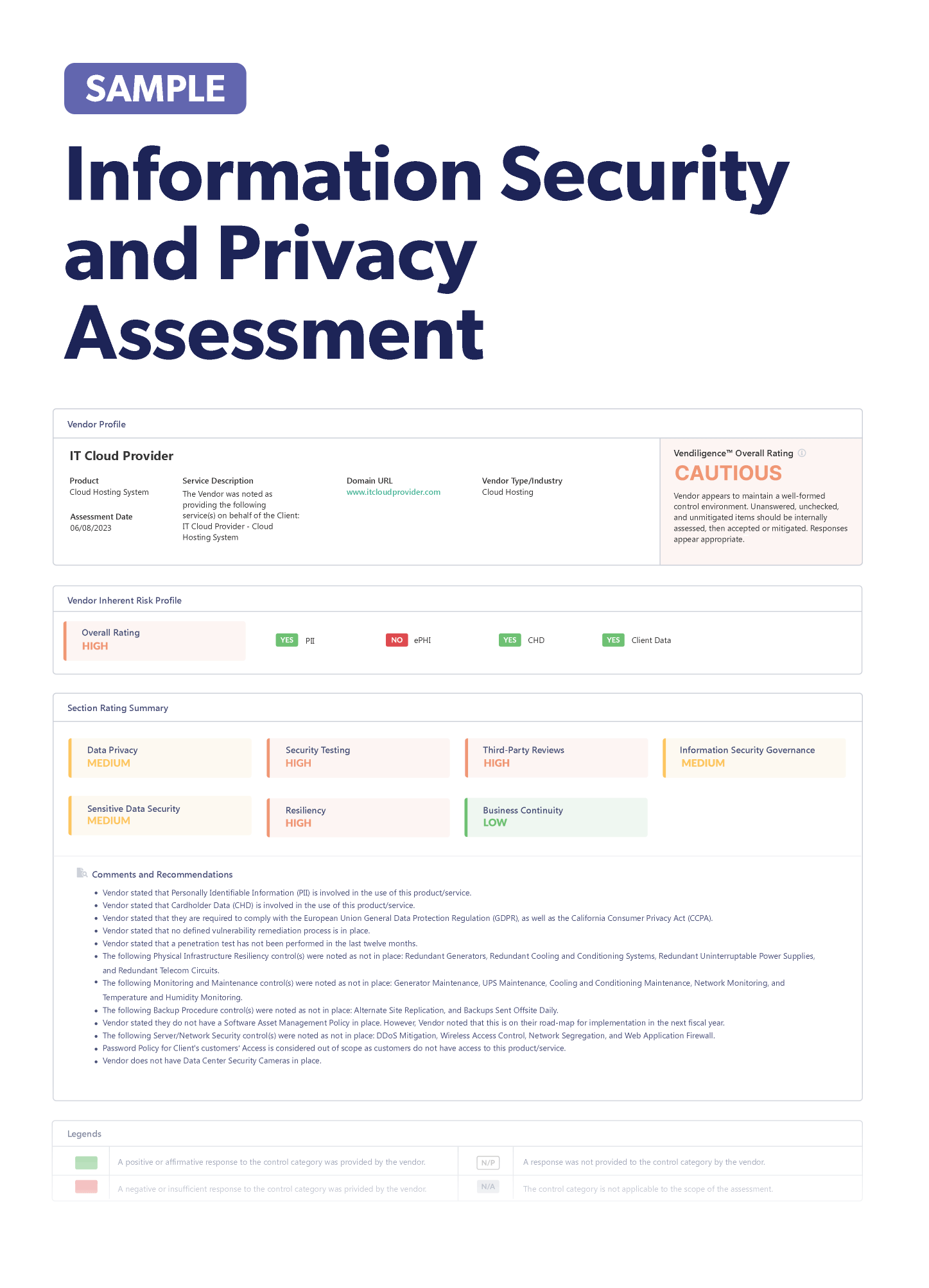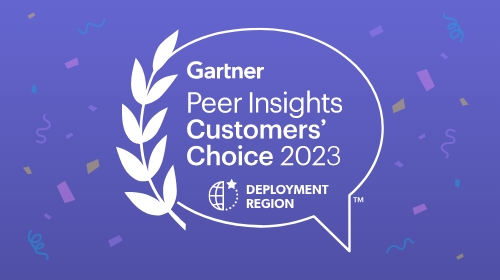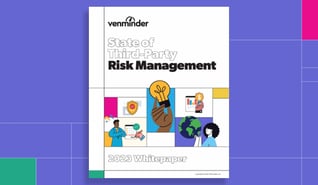Learning how to successfully negotiate a vendor contract is a valuable skill to include in your vendor risk management (VRM) program. Vendor contract negotiation is designed to create a mutually beneficial relationship between both parties, while also protecting your organization from vendor risk.
Contract negotiation can occur as part of the initial onboarding process for new vendors or when you’re deciding to renew a contract with an existing vendor. There are many factors to consider when negotiating, even if you’re starting the process with a vendor contract template. Here are some suggestions on what to consider during the negotiation process.
Initial Considerations to Negotiate Vendor Contracts
Your organization may have different requirements for vendor contract negotiations, depending on the vendor’s inherent risk, criticality, and the product or service being provided. Consider the following questions before negotiation to help streamline the process:
- Who needs to be involved? Make sure you’ve identified each individual and department that will be involved in negotiating the vendor contract. This may include legal, cybersecurity, information technology, procurement, VRM, and the relevant business owner. Also make sure to confirm who has the authority to sign off or approve any vendor negotiation requests.
- What are the non-negotiables? Consider whether your organization has any non-negotiable terms, such as pricing, performance standards, timing of implementation and/or deliverables, or certain security controls. These should be identified and communicated with the vendor before you begin negotiating.
- What is the timeline? Negotiating a vendor contract can be a lengthy process, depending on the specific terms and both parties’ willingness to compromise. You may want to set a timeline for the negotiation process to ensure it concludes within a reasonable period.

Top 6 Items to Negotiate into Vendor Contracts
Specific contract terms are highly dependent on the vendor relationship, but certain details are commonly found in most agreements.
Here are the top 6 items to review and negotiate for vendor contracts:
- Service level agreements (SLAs) – These describe the expectations between both parties, how the vendor’s service will be measured, and any remedies or penalties if expectations are not met. Consider the standards for the vendor and their product or service, the metrics your organization will use to evaluate the vendor, and how disputes will be handled.
- Confidentiality provisions – These are clauses that protect your organization’s and customers’ sensitive information. You could also include a separate mutual non-disclosure agreement (MNDA) or confidentiality agreement as part of the contract to ensure both parties will protect each other’s confidential information. These provisions may include details about how both parties will protect the confidentiality, integrity, and availability (CIA) of data, as well as any requirements for returning or destroying data.
- Due diligence requirements – Include language that legally obligates the vendor to provide any relevant due diligence documents that will need to be reviewed on a regular basis, such as SOC reports, business continuity plans, financial statements, etc. A right to audit clause should also be negotiated for critical or high-risk vendor contracts. This requires the vendor to provide certain due diligence documents upon request, outside of regularly scheduled reviews.
- Term, notice, and automatic renewals – The contract term may need to be negotiated if the initial length is too long or short for your needs. Be sure to negotiate any notice periods and automatic renewals, so the vendor complies with your organization’s vendor risk management policy. These terms will help ensure both parties are aware of important contract dates and notice periods, so there’s enough time to perform a mid-term review.
- Data breach notifications – Third-party data breaches are on the rise, as well as increased regulatory focus on data breach notifications. Stay aware of any compliance expectations within your industry, which may require notifications within a certain time frame. You can then negotiate a data breach notification clause that requires your vendor to notify you when a breach occurs.
Pro Tip: A typical reporting time frame is within 24-72 hours after discovery of a breach. Include detailed instructions on how the vendor should handle any compromised information and penalties that may result from the breach, such as contract suspension or termination.
- Exit strategy – Having an exit strategy is crucial, as it outlines the process under which a vendor partnership can be terminated. Some main points typically negotiated and included in such an agreement are:
- Conditions for exit – Detail the conditions where an exit can occur (such as voluntary termination, sale of the business, failure to perform, or other triggering events).
- Exit procedures – Include the step-by-step process for executing the exit strategy, along with timelines for each step to ensure clarity and avoid disputes. Also consider transition assistance when converting to another vendor.
- Deconversion costs – These are any costs associated with termination of the contract. This should be agreed upon in vendor contract negotiations and capped.
- Payment terms – State how and when deconversion fees are paid.
- Non-solicitation – Describe any non-solicitation agreements the exiting party must adhere to after termination.
- Confidentiality clauses – Communicate the confidentiality requirements regarding sensitive business information.
- Dispute resolution – Explain mechanisms for resolving disputes arising from the exit process (such as mediation, arbitration, etc.).
By covering these main points, an exit strategy helps ensure a smooth and fair transition, minimizing potential conflicts.
3 Tips for Negotiating Vendor Contracts
Negotiating a vendor contract requires careful planning and effective communication to ensure both parties are satisfied with the results. Here are 3 tips that can help support successful vendor contract negotiation:
- Understand your goals – Always keep your goals in mind throughout the vendor contract negotiation process. Consider how the vendor’s product or service will help achieve your goals, whether that’s bringing more efficiency to your operations or saving costs.
- Collaborate with the vendor – Vendor contract negotiations should be a two-way process, so remember that you may need to compromise on some of your terms. This collaboration can help build a strong foundation for your vendor relationship.
- Know your limits – Be willing to walk away from the negotiation if the vendor’s terms aren’t meeting your needs. A vendor that isn’t willing to compromise may bring future difficulties, so it may be best to consider an alternative.
Vendor contract negotiations are an important part of every third-party relationship and will help set clear expectations for both parties. Understanding your goals, wants, and needs for the vendor relationship can help you negotiate an effective agreement that will protect your organization.


















